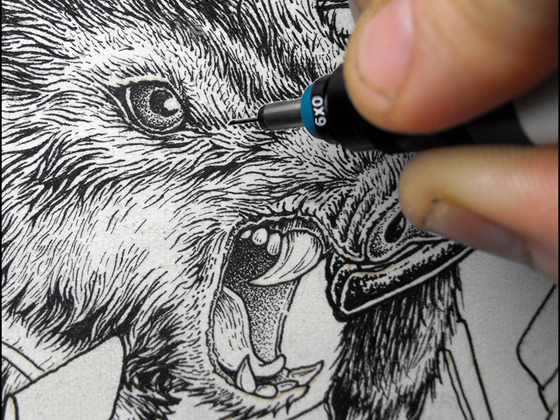My post about hanging out with Beehive Design Collective back in August.
http://www.northwesternartreview.org/home/2011/10/25/cross-pollinating-the-grassroots-with-beehive-design-collective/
After three years of being immersed in the privilege and pre-professionalism that is college at Northwestern, I opted for a change. This summer I lived with an anarchist collective in small-town Maine for several weeks. I got the whole package: vegan meals, writing letters to prisoners, showering once a week, and camping in a damp tent amidst clusters of valerian.
This was the Beehive Design Collective’s annual Work Party, a summer event wherein the graphics-making Collective invites the public to camp and work with them for a month. Aside from hanging out with a lovely array of open, friendly, and inspiring people and radicals, I had the opportunity to glimpse, firsthand, the processes involved in executing the Collective’s graphics campaigns.
The Beehive Collective began over a decade ago as a mosaic-making group. The Collective’s emergence alongside the anti-globalization movement of the early 2000s resulted in a shift to posters and drawings, as the Collective searched for a more effective way to fit into the media of the movement. Since then, they have launched several major graphics campaigns, usually centered around anti-capitalist and environmental concerns.
Twice a year, the “Bees” go on tour to publicize their campaigns by delivering presentations around the country. I had the opportunity to witness their presentation on The True Cost of Coal, an intricate collaborative illustration that draws attention to the issue of mountaintop removal mining, a method of coal mining that requires the removal of mountain summits for easier resource extraction. I was also able to discuss other graphics campaigns, notably Free Trade of the Americas, with members of the Collective as well as other volunteers. While the posters show stylistic nuances—a result of the illustrators’ varying artistic modes and drawing techniques—the overall style of the posters is consistent. The viewer is first assaulted with a harsh, sharply contrasted black-and-white thicket of imagery. The confrontational nature of these posters is magnified by the monumental size, as the original illustrations are large enough to span a small room. The size also works to underline the vastness of the issues that the posters deal with, and to unravel the mass of images on each poster requires tremendous attention to detail.

One striking feature of the illustrations is their lack of human representation. The space of each poster is dominated by plant and animal imagery, with each and every detail symbolizing an aspect of the issue that the posters tackle. In order to create such meticulous illustrations, each subject is researched extensively before drawings are conceptualized. To do this, the group spends months traveling and speaking with locals (in the case of the True Cost of Coal, these were communities in Appalachia that are directly affected by mountaintop removal) and others who are involved with the issues at hand, as well as investigating the flora and fauna that are meaningful to the areas of concern. After the research is completed, the group relies on the use of mind maps to encourage a non-linear way of visualizing various features of the illustrations, and a team of illustrators collaborates to draw each element. Months later (sometimes years), a graphics campaign finally arises. The presentations given on the subsequent tours clarify the narratives behind each poster, illuminating the significance of each feature.
Another notable aspect of the Beehive’s posters is the “anti-copyright” label that appears on each print. The anti-copyright promotes free use and dissemination of the collective’s graphics to the masses. In this sense, the graphics operate as educational implements designed to supersede commodity culture and inform without charge. The reproducibility of the work is further highlighted by the achromatic quality of the posters, which follows a tradition of political artwork that abstains from the use of color.
Consistent with the collective’s emphasis on autonomous and communal education, many of the posters and their narratives are available online at the Beehive Collective’s website. Check out their artwork and be on the look out for upcoming tours!


No comments:
Post a Comment